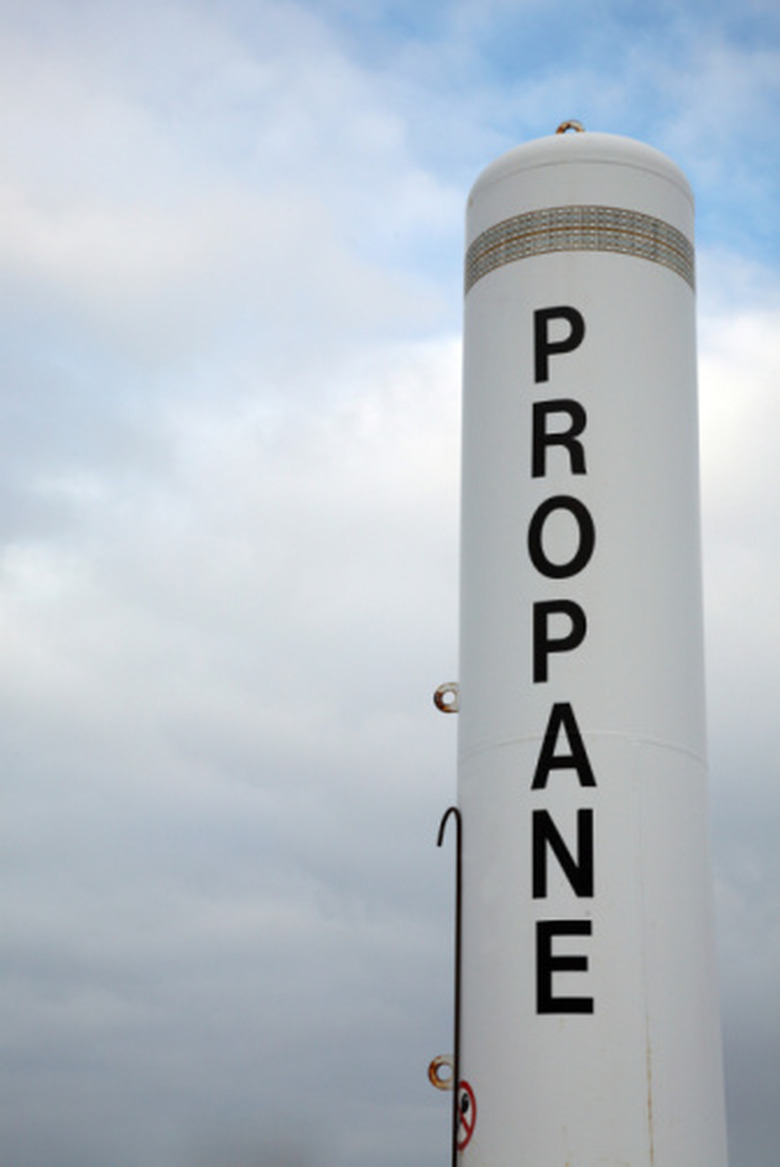Intermolecular Forces In The Structure Of Propane
Intermolecular forces are forces between molecules. Compared to the forces that hold a molecule together, they are usually relatively weak, although they are ultimately the forces that hold molecules in liquids and solids together. The strength of the intermolecular materials in a substance determine physical properties like boiling point and melting point. It is the weakness of the intermolecular forces in propane that help explain why it is a gas at room temperature and atmospheric pressure.
Nature of Propane
Nature of Propane
Propane has the molecular formula C3H8: three carbon atoms and 8 hydrogen atoms. The three carbon atoms form a single chain with three hydrogens on the carbon at each end and two hydrogens on the middle carbon. The atoms at either end of a single bond can rotate, so the atoms at either end of both bonds are rotating at room temperature. In the gas phase, the molecules are flying around in a disorganized fashion.
Electron Distribution
Electron Distribution
We like to think about electrons as particles, but really they behave in some ways like waves and in other ways like particles. Consequently, we can never know both an electron's momentum and its position at the same time. The electrons are distributed around a nucleus like a constantly shifting cloud. Although on average the electrons will be evenly distributed, at any given instant there might be an imbalance, with an excess of negative charge in one region and a reduction of negative charge in another. The molecule will very briefly become a dipole, with a net negative charge in one area and a net positive charge in another.
London Dispersion Forces
London Dispersion Forces
Opposite charges attract; like charges repel. As two molecules approach each other, an instantaneous dipole in one molecule will attract opposite charges in the other molecule and create a weak dipole in its neighbor. The two weak dipoles now attract each other. Although the instantaneous dipole of the first will continue to change, the induced dipole in the second molecule will follow suit, so the weak attraction between the two molecules will persist. This type of intermolecular interaction is called a London dispersion force. Generally, larger molecules are easier to polarize, so they experience stronger London forces than smaller molecules.
London Forces in Propane
London Forces in Propane
London forces are the only intermolecular force that propane molecules experience. Propane molecules are relatively small, so the London forces between them are weak — too weak to hold them together in solid or liquid phase at room temperature. To make propane into a liquid, you need to cool it down, which causes the molecules to move more slowly; at very cold temperatures, even the weak London interactions can hold the propane molecules together. Compressing propane will, therefore, turn it into a liquid.
References
- "Chemical Principles: The Quest for Insight"; Peter Atkins, et al.; 2008
- Purdue University Chemistry: London Dispersion Forces
Cite This Article
MLA
Brennan, John. "Intermolecular Forces In The Structure Of Propane" sciencing.com, https://www.sciencing.com/intermolecular-forces-structure-propane-8236316/. 24 April 2017.
APA
Brennan, John. (2017, April 24). Intermolecular Forces In The Structure Of Propane. sciencing.com. Retrieved from https://www.sciencing.com/intermolecular-forces-structure-propane-8236316/
Chicago
Brennan, John. Intermolecular Forces In The Structure Of Propane last modified March 24, 2022. https://www.sciencing.com/intermolecular-forces-structure-propane-8236316/
